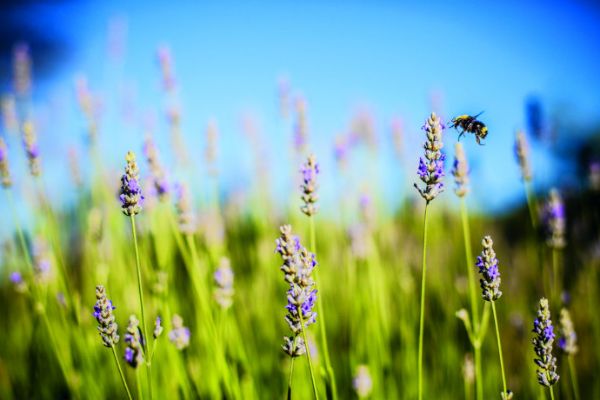 Yama and Niyama – Living Truth
Yama and Niyama – Living Truth
By Srinivasan
Yama and Niyama are not only the foundations of Yoga, they are the ethical and spiritual ideals by which we live. Without ethical discipline, any attempts at asana, pranayama, meditation, or samadhi lack the strength of character and moral integrity essential for success.
 Yet ethical discipline as a practice of self-mastery is also one of purification, which means facing lifetimes of emotional issues, weakness, and hypocrisy. As we develop deeper discrimination and awareness of negative habits and attitudes that were accepted as “normal” until we took on the Sadhana of Yama and Niyama, we will be confronted with the moral dilemma between the an ideal of ethical perfection and the human frailties of emotional immaturity – ignorance, vanity, attachment to comfort, prejudice and fear.
Yet ethical discipline as a practice of self-mastery is also one of purification, which means facing lifetimes of emotional issues, weakness, and hypocrisy. As we develop deeper discrimination and awareness of negative habits and attitudes that were accepted as “normal” until we took on the Sadhana of Yama and Niyama, we will be confronted with the moral dilemma between the an ideal of ethical perfection and the human frailties of emotional immaturity – ignorance, vanity, attachment to comfort, prejudice and fear.
To compound this dilemma, the mind recoils in shame and guilt, or denial when faced with these weaknesses. From a Yoga perspective this recognition of imperfection or impurity is the starting point of our practice or sadhana. This is why the Bhagavad Gita, the great scripture of Yoga, begins with the “Yoga of the Despondency of Arjuna,”, the great hero who is shaken into depression because he wants to do the “right thing”, and finds no satisfactory option. Yama and Niyama are deceptively simple yet humbling in their difficulty to perfect.
The very attempt for integrity in ethical perfection is the essence of the vast majority of Yoga practice. As “union of body, mind and spirit,” Yoga is a homeostasis of healthy living and moral character. As“the art of right living,” Yoga is service and sacrifice with friendliness and compassion for all life. As “union with God,” Yoga is a tuning to the Universal Consciousness behind all life and a realisation of the God’s Love, which is the Divine essence of all Life. Ethical discipline is the integration of this understanding into every aspect of daily life. The practice of spiritual knowledge and devotion is nurturing and healing as we build character and integrity.
The Example of Ahimsa – Nonviolence
Yama and Niyama are precepts to live by, a structure to build strength of character by which to delve into the deconstruction of the delusions of rajasic and tamasic ego, as the play of the gunas in the mind and our relationships. For example, take the very first Yama, Ahimsa, or nonviolence. As a Yama, it is not just a law, a social more, or an abstract concept – it is a Great Vow, (Mahavrata) and as such, provides the willpower and commitment essential to build integrity of character and the subtle discrimination to develop a compassionate conscience.
Ahimsa is the foundation of all healthy relationships – with all living beings, with our self, and with God, because it develops consistent love and respect. Devotion, respect, and compassion are essential allies that make the skillful practice of Ahimsa possible, because they are the sattvic expression and motivation for the practice of nonviolence. The only reasons we would ever want or feel the need to act or think violently is because of the negative or impure influence of the qualities of Tamas and Rajas in the mind.
Through generations or lifetimes of evolution of consciousness, the human mind has developed both instinctive violent reactions to perceived threats to self-preservation or property on the one hand, and habitual strategies of bullying and manipulating others to force our will and fulfill selfish desires on the other. From a Sattvic or spiritual perspective, all life is one. The very consciousness behind life is God, the love of God, or Satchidananda – Existence, Knowledge, Bliss Absolute. The basis of spiritual or religious morality is to “love thy neighbour as thy Self.” This includes “love thy enemy,” because the “enemy” is a mental perversion of perception.
It is the rallying cry of war that turns our neighbour into our enemy. This tamasic perception and emotional reaction of fear, anger, prejudice and hatred, is the mental projection that destroys families and all other relationships. From the perspective of Yoga as “skill in action”, these “lower emotions” are at the very root of Karma, the inner emotional issues that this life is giving us opportunities to resolve.
Resolving lifetimes of unskillful, or immature strategies for obtaining happiness, is the daily moral struggle of life. In the face of this instinctive delusion, Ahimsa is a counter-instinctive vow that saves families, friendships, and compassionate relation ships with all of our neighbours, one situation at a time. It transforms our “enemies’ into “neighbours” and finally into “Self”.
From a Sattvic or spiritual perspective, all life is one. The very consciousness behind life is God, the love of God, or Satchidananda – Existence, Knowledge, Bliss Absolute.
Transforming Attitudes as the Gunas of the Mind
The goal of Yoga is to transcend duality, the Gunas, the world, and the mind to realise the Absolute Spirit that is the Conscious – ness or Self in all beings. To do so, we must unlearn all of the instincts that put us in competition, or at war with our neighbours; or which allow the ego to objectify our neighbours for selfish reasons. The duality of the mind makes me the subject, and all others objects.
The mature spiritual Realisation is that Life itself is the subject, and it is the false constructs, projections of the mind, that have turned family, friends, neighbours, others into enemies, obstacles, competitors, outcastes, or objects of desire. The Yamas cut away that delusion by establishing a higher moral standard that respects all life and skillful behaviour to support that respect. The Niyamas cultivate sattvic self-discipline, attitude, knowledge, and ultimately direct experience of the Absolute, through surrender to Truth or God.
This life, and our experience of life, is a play of the gunas – Sattva, Rajas and Tamas. Until our minds are purified in the light of knowledge, in Sattva, experience of this world will be coloured by Rajas – desire, attachment and vanity; and Tamas – disappointment, doubt, hatred and despair. The path of the “Good” is the path of Sattva. The path of the “pleasant” is Rajas. Tamas is giving up on life, or a rejection of life. The practice of Yama and Niyama is a commitment to the Good and a rejection of the path of the pleasant that compromises our integrity.
Yoga shows the way through cultivation of character and faith in Yama and Niyama. With a little knowledge of the delusions of the mind, we recognise the influence of the impurities of rajasic and tamasic instinct on our thinking and begin to recognise the vain reactions of ego to things we like or dislike and to perceived threats to our ego or vanity. Tamas in the mind instinctively makes us feel fear, project judgement, and objectify others and ourselves, resulting in both self-hatred and hatred of others.
Tamas is root ignorance in the form of prejudice that demonises ourselves and others. Once this prejudice has transformed others into enemies and perceives them as threats, Tamas goes on to create the belief that we must destroy or punish them in self-defence. Thus the vow of Ahimsa is a direct act of sacrifice of deeply held instinctive prejudice and hatred at the altar of Truth or God. Rajas in the mind perceives the world materially as objects to accumulate and exploit for power, wealth, and pleasure.
The rajasic intellect driven by the instinct of greed, transforms our neighbours into various categories of objects – objects to be exploited, objects to be discarded as worthless, or as competitors in the struggle to dominate and consume the material objects we desire. Lust is a rajasic objectification of ourselves and others as sexual objects. Nature is resource to be exploited, bought and sold, conquered and consumed. The practice of all of the Yamas allows us to sacrifice these rajasic instincts at the altar of Truth.
Like the vow of a public servant or a marriage vow, Yama is a commitment to righteousness or duty.
The Great Vow
The Yamas are first and foremost Mahavrata or Great Vows, as Patanjali Maharishi proclaims in the Yoga Sutras. Like the vow of a public servant or a marriage vow, Yama is a commit – ment to righteousness or duty. The vow reminds us of our faith and commitment to God, humanity, or Truth. Yama acknowledges the need to restrain rajasic or tamasic instincts that tempt the aspirant to deviate from or compromise that commitment.
Daily life is a struggle to live up to the sattvic standard of dharma, or right thought, speech, and action. As long as our issues, the tamasic instincts of fear, hatred and self-defence; and the rajasic instincts of greed, lust, and anger are not transformed into Sattva, or oneness in Truth, the vows serve as the line of defence to keep us from destroying our integrity and relationships. Ethical perfection is a divine goal, yet one that we can never realise by action alone.
To “love our neighbour as thy Self” demands that we realise the Self. As long as we are lost in the illusion of duality, of superior and inferior we are prisoners of ego and vanity. Even to judge the world according to the gunas is ego and a breach of ethical perfection. Realisation is the effect of purified mind, forged out of integrity, discrim – ination, compassion consistent with the practice of Yama and Niyama. Therefore it is important to develop their practice step by step.
Integrated into character, Yama and Niyama become principles that are mindfully applied as not only disci plines, but as the basis for the viveka or dis crim – ination that guides us on the path of Yoga.
Levels of Yama and Niyama
As new Sattvic habits take root in our consciousness, they become incorporated as character and conscience. Integrated into character, Yama and Niyama become principles that are mindfully applied as not only disciplines, but as the basis for the viveka or discrimination that guides us on the path of Yoga. Let us look at each of the levels Yama and Niyama take us through the path of Yoga.
The first level of practice must be an ironclad defence to protect not only others, but the very foundations of our character and integrity. These are specific rules or laws of healthy behaviour to live by. They are where we begin our practice and continue as commandments to protect us from the ravages of the tamasic and rajasic mind. Here the Yamas take the form of:
1. Social laws that protect society.
2. Professional guidelines that protect students, parishioners, patients, and clients.
3. Personal boundaries of behaviour or character. As personal vows, one maintains standards of religion and faith.
4. Development of integrity or character, consciously confronting personal defects or weaknesses, building new, higher standards for purity, contentment, self-discipline, and faith.
Next, one develops principles for living a Divine Life that become integrated as character and conscience which examines every action, every intention, as well as their consequences by the values of the gunas as they specifically relate to each Yama and Niyama. These include:
1. Spiritual principles for honouring God and one’s integrity – to be true to oneself, Dharma, and God.
2. Developing the attitude that this world of karma is a place to work through our issues, to remove negative qualities, and to cultivate positive ones. Yama and Niyama offer a standard by which to develop sattvic character. Welcome challenges as growth opportunities.
3. Cultivate the faith to sacrifice ignorance, addiction, hatred, and fear.
4. To recognise the Divine nature of our true Self and act accordingly. “Thou art Divine! Live up to it!” – Swami Sivananda
Finally, Yoga is the practice of quieting the mind and meditation: “Yogas chitta vritti nirodhah.” Yama and Niyama become daily sadhana in the practice of Abhyasa and Vairagya:
1. A quiet mind begins with a clear conscience based on living one’s faith with integrity.
2. Yama provides clear standards to live up to. To perfect any of the Yamas takes lifetimes. As a universal vow or Mahavrata, the practice of only Ahimsa is a daily sadhana to free the mind of violent reactions based in vanity, fear, and prejudice. Each of the other Yamas can be taken as tools for self mastery.
3. Niyama offers systematic program to cultivate faith through purity, gratitude, self-discipline, scriptural study, and surrender to God.
4. Pratyahara or abstraction of the senses to follow the mind begins and is developed through the regular practice of Yama and Niyama.
5. Concentration has substance when focused on the highest ideal discovered through the practice of Yama and Niyama.
6. Meditation flows out of loving devotion to the Truth discovered through the practice of Yama and Niyama. Japa, or repetition of the Divine name, is key element of all of the Niyamas – mental purification, gratitude or contentment, the highest Tapas or austerity of the mind, a study of the nature of God through contemplation of the name, and finally surrender to Divine name is surrender to Ishvara.
7. Samadhi is complete absorption in God or Self revealed through the practice of Yama (“Adapt, adjust, accommodate; bear insult and injury”) and Niyama (Japa meditation).
8. In the absolute silence found in meditation on Ishwara or the Immortal Self, unaffected by Nature or the play of the Gunas, the intuitive light of Self-knowledge is revealed. Silence, light, and wisdom are qualities of pure Sattva, untainted by Rajas and Tamas.
Samadhi is complete absorption in God or Self revealed through the practice of Yama and Niyama.
Self-mastery is the result of continuous, skillful practice of Yama and Niyama on all of these levels. The path of Yoga, especially Yama and Niyama, purifies the mind of its rajasic and tamasic tendencies, through the light and wisdom Sattva. The intellect is transformed into a pure, reliable mirror to know that Immortal Self in sacred silence. Yoga is union with one’s true Self, or communion with God. Yama and Niyama are the foundation and path of Yoga in this long journey of Self- Realisation because they build the strength and clarity of character from which to respect oneself and see all life as Divine.
“All creation is an organic whole. No man is independent of that whole. Man makes himself miserable, by separating himself from others. Separation is death. Unity is eternal life. Cultivate cosmic love. Include all. Embrace all. Recognise the worth of others. Destroy all barriers that separate man from man. Recognise the non-dual principle, the immortal essence, within all creatures. Protect animals. Let all life be sacred. Then this world will be a paradise of beauty, a heaven of peace and tranquility.” – Swami Sivananda
Srinivasan is a senior disciple of Swami Vishnudevananda. He is the acharya for the US East Coast Sivananda Yoga Centres and Director of the Sivananda Ashram Yoga Ranch in New York State.
email: [email protected]






























